Conclusions
(3) 1996 - 2001
previous
| 15. |
Violets (Viola riviniana) were one of the most dominant species across the whole project site. |
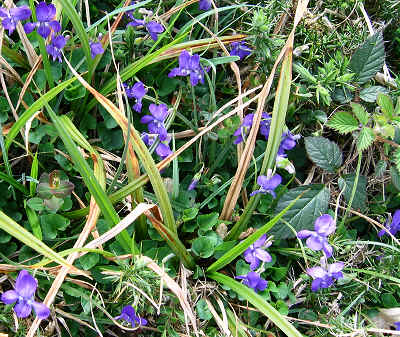 |
Violets (left) have consistently been the fifth most dominant species on the project site
since 1999. They are most abundant in the annually cut sections. They were less common in the more heath-like sections in the northern-most
part of the project site and had been more or less eliminated from the control section by
2001. |
| . |
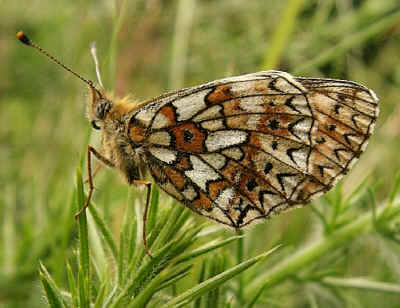 |
The Small Pearl-bordered
Fritillary (left),
a species which is of conservation concern, was recorded on the project site for the first
time in 2001. This was no accident as the caterpillars of
this species feed on violets, including the Common Dog-violet (Viola riviniana), so
abundant on the project site.
The female butterflies lay their eggs on or near the violets. |
| 16. |
Mosses have been a very significant component of the vegetation regenerating
on the project site. |
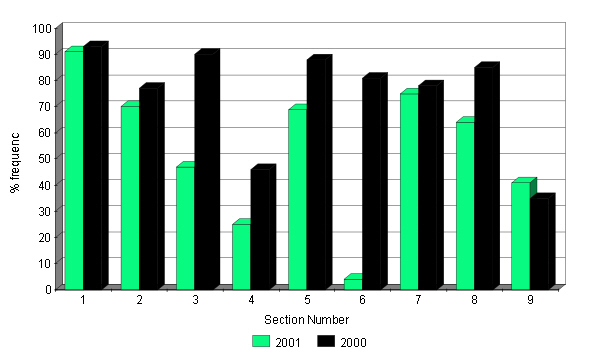 |
The most common moss on the project site
was Eurhynchium praelongum. This began to establish in 1997 and by 2001 was the third
most dominant species on the project site. (Click on the image shown on the left to see
the full size distribution chart for 2001.) This
species is normally abundant in woods and hedgerows, but occurs across a wide range of
habitats, including fields and marshes. It is a particularly shade tolerant species. This
is an important feature which has allowed this moss to become dominant in the ground layer
of the project site, despite being shaded by much taller vegetation for much of the year. |
| . |
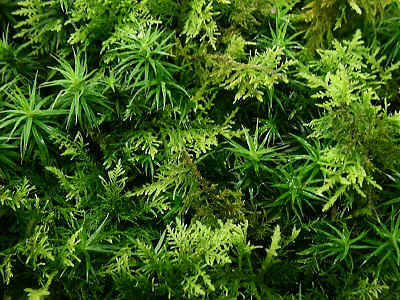 |
Other
common mosses included Thuidium
tamarascinum and Polytrichum formosum (left). Thuidium
tamarascinum is more often
found in woods and on hedgebanks, but it will also grow with other mosses amongst grass in
open situations, as on the Heathland Restoration Project site. This moss and Eurhynchium praelongum,
were the commonest moss species in section 5, the control strip. These two shade tolerant
moss species thrived on the trunks and bases of the tall gorse bushes and young saplings
in this section. |
| . |
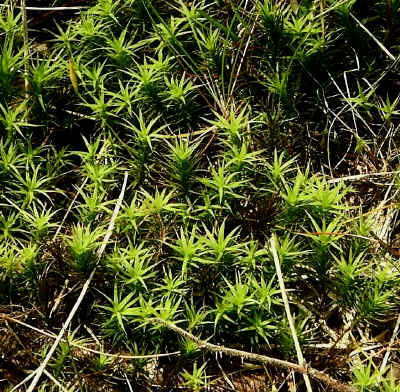 |
Polytrichum formosum (left) is primarily a woodland moss, although it also occurs on
well drained heaths. On the Heathland
Restoration Project site, this moss usually grows as thick carpets, often up to 10cm in
height, in the more open areas. It is much less likely than the other mosses to be found
intertwining among the grasses.
|
| Other Polytrichum species such as P. piliferum and P. juniperum are more characteristic of heaths, being especially common as colonists on
newly burnt sites. Distinguishing between individual species of Polytrichum in the
field can often be difficult. Individual plants of the same species can vary widely in
appearance and size depending on environmental conditions. Separating the species often
requires microscopic examination and slide preparations to make certain of identification.
Polytrichum
piliferum and P.
juniperum have not been recorded in the survey
quadrats, but it is entirely possible that species of Polytrichum other than P.formosum are present on the project site. Time has simply not been available to
individually examine every clump and stand of this widespread moss on the project site. |
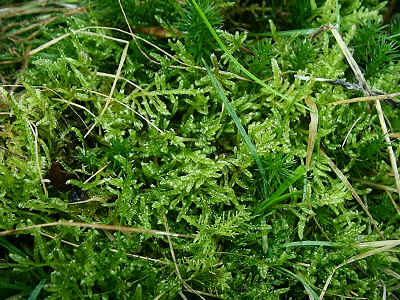 |
Hypnum jutlandicum (left plus Polytrichum and Thuidium
tamarascinum) is a very characteristic heathland moss. It was
formerly classified as a variety of Hypnum
cupressiforme (H.cupressiforme var.ericetorum) but is
now considered sufficiently different to warrant specific status in its own right. It occurs on acid soils, especially on heaths and among
Heather (Calluna). This moss has consistently
increased across the site, most especially in the northern-most sections. |
| 17. |
Rhododendron ponticum is regenerating across the project site. |
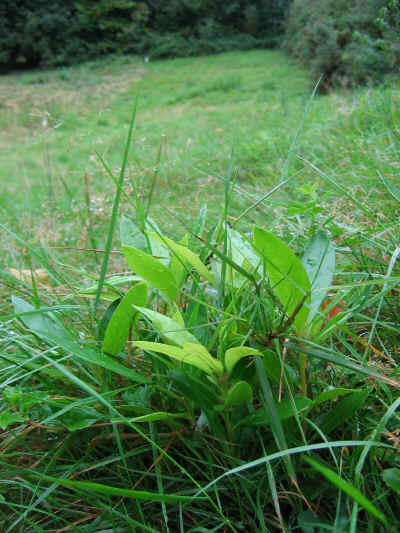 |
Rhododendron
ponticum (left) has been recorded on the project site since
1997. This highly invasive, non-native species formed the
understorey in the original woodland covering the project site prior to clearance.
It is toxic to our native invertebrates, leading to the collapse of
food chains in areas dominated by this species.
By 2001, it had re-appeared in 5 of the 9 sections. |
| . |
 |
In Britain,
the normal climax stage of natural succession from heathland is woodland.
This natural succession can clearly be seen taking
place in section 5, the control section which has had no management at all.
In this section, the tall gorse currently dominating,
will eventually be shaded out by the developing trees. In time, the strip will become a
miniature woodland. However, without intervention, this will not be the climax stage in
the succession.
In the absence of any management or control, the
re-invading rhododendron would form an understorey under the mature trees. Its extreme
shading effect would prevent anything from growing underneath. When the mature trees
eventually died, there would be no tree seedlings or pioneer species able to replace them
and the rhododendron would take over completely. |
|